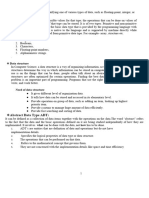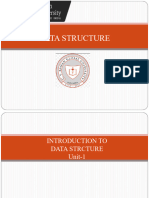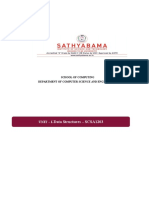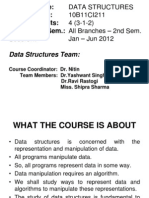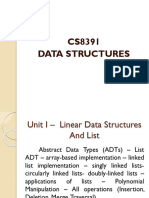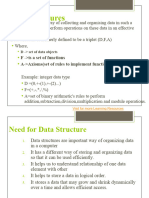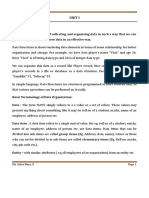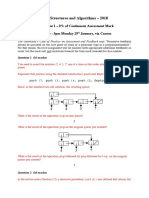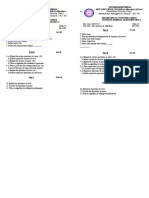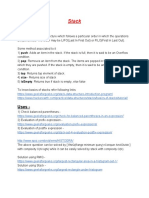0% found this document useful (0 votes)
9 views14 pagesDsa Ch1 Notes
The document provides lecture notes on Data Structures and Algorithms, explaining the distinction between data and information, various data structures (both linear and non-linear), and operations on data structures. It also covers Abstract Data Types (ADTs), algorithms, their properties, performance analysis, and asymptotic notations. Key examples include stacks, queues, trees, and graphs, along with algorithms for common tasks like finding roots of quadratic equations and calculating factorials.
Uploaded by
Raushan KumarCopyright
© © All Rights Reserved
We take content rights seriously. If you suspect this is your content, claim it here.
Available Formats
Download as DOCX, PDF, TXT or read online on Scribd
0% found this document useful (0 votes)
9 views14 pagesDsa Ch1 Notes
The document provides lecture notes on Data Structures and Algorithms, explaining the distinction between data and information, various data structures (both linear and non-linear), and operations on data structures. It also covers Abstract Data Types (ADTs), algorithms, their properties, performance analysis, and asymptotic notations. Key examples include stacks, queues, trees, and graphs, along with algorithms for common tasks like finding roots of quadratic equations and calculating factorials.
Uploaded by
Raushan KumarCopyright
© © All Rights Reserved
We take content rights seriously. If you suspect this is your content, claim it here.
Available Formats
Download as DOCX, PDF, TXT or read online on Scribd
/ 14



